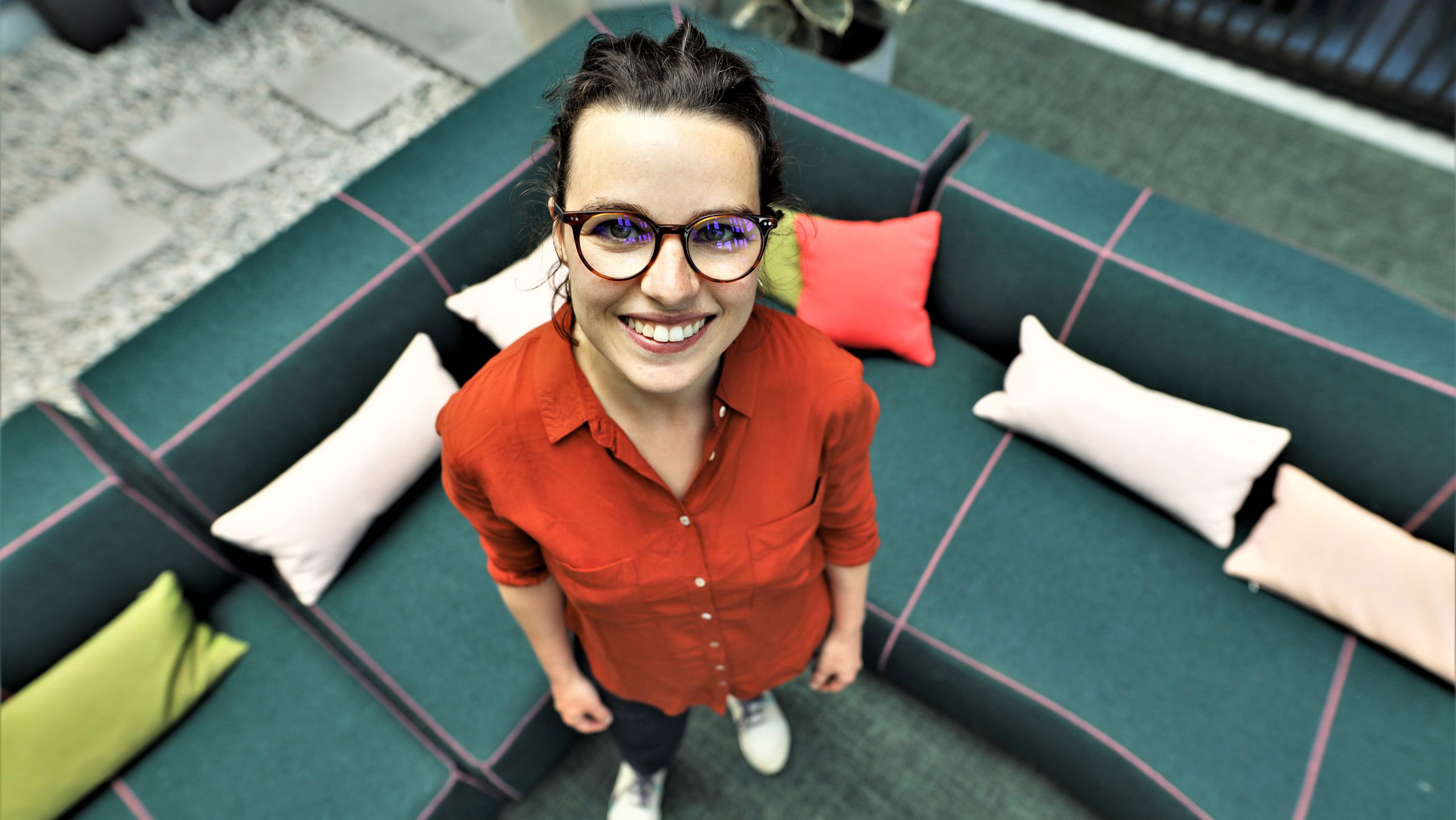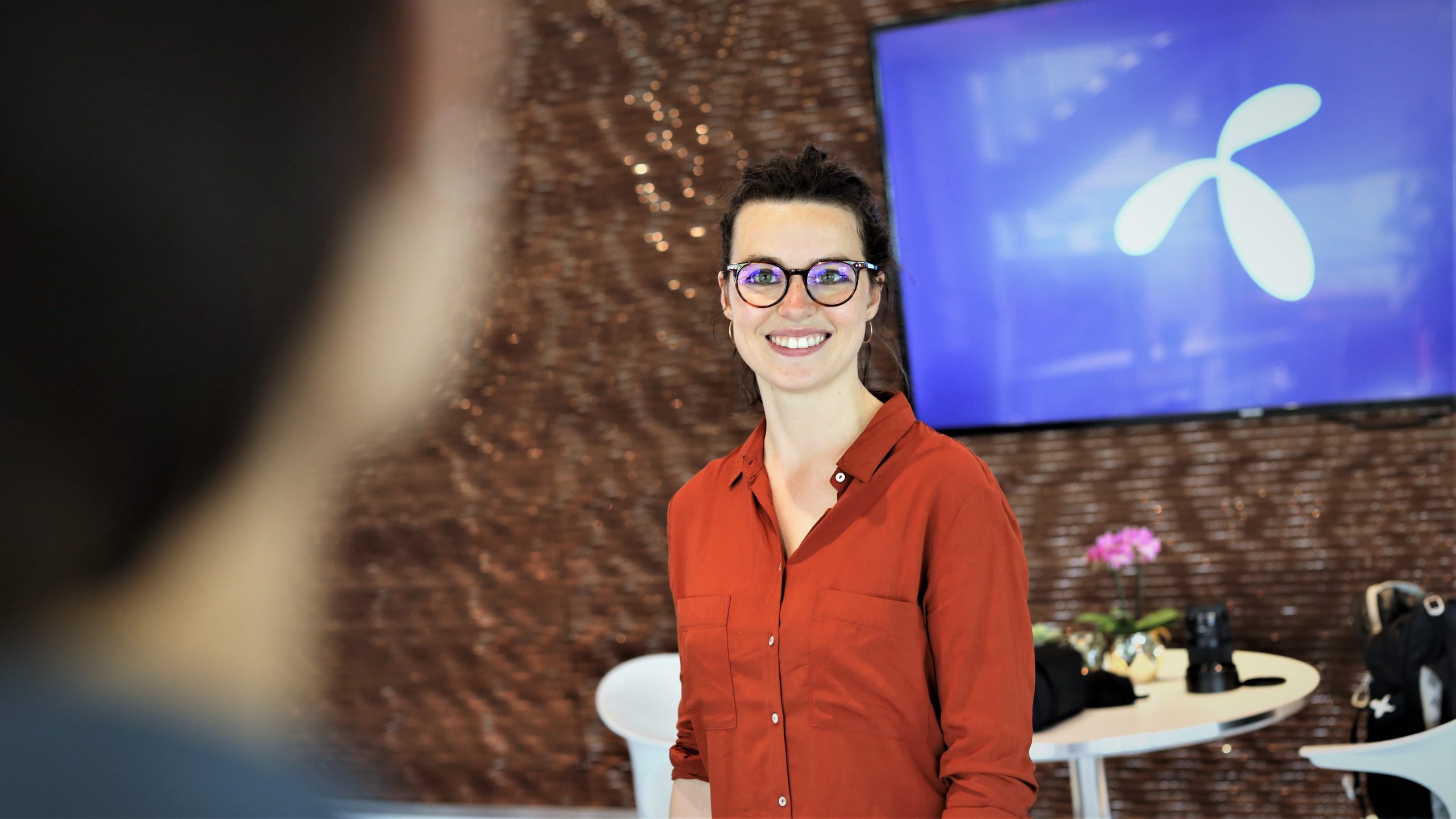
Math whiz leaves academia to find AI inspiration at Telenor
Advance
Advancing connectivity to accelerate the digital future
Advance means that Telenor is at the forefront of technological development, constantly innovating and exploring for the benefit of customers, businesses and society.
Italy-native Sara Malacarne’s pursuit of mathematics brought her to Norway and eventually to Telenor Research, where she works as a researcher, leading the ‘ML4ITS: Machine Learning for Irregular Times Series’ project.
When you tell Sara Malacarne your phone number, she visualises a series of colours. Her photographic memory (in which all numbers are coded as colours) is like her secret weapon – an attribute that came in particularly handy when her husband forgot his bank pin code right before a big trip.
Malacarne was born and raised in Italy. She spent her formative years studying liberal arts, taking only basic mathematics throughout secondary school. But when the time came to enter university, Malacarne knew she had no choice. Her future was in numbers…or colours, for that matter.
She discovered the world of operator algebra while in university, eventually pursuing a master’s degree at the University of Rome Tor Vergata and a PhD at the University of Oslo. Today, Malacarne is a member of the Artificial Intelligence (AI) and Analytics team in Telenor Research.
Has mathematics always come easy to you?
SM: Not at all! I have always put great passion into it, but it has been challenging at times, especially when starting something new, and I would often spend day and night studying. In math, there are many ways to find solutions, and I found it easier to catch on in the beginning by working with groups. From there, I could get the basics in place and then find my own way of visualising the problem and reaching a solution.
Why did you decide to come to Norway for your Ph.D.?
SM: When I decided I wanted to pursue a Ph.D., my master’s degree supervisor recommended a prestigious Ph.D. position to work with Professor Sergey Neshveyev at the University of Oslo, in the department of Operator Algebras. It was a great opportunity for me. I didn’t know what to expect when moving to Norway in October. But I was fascinated by the scenery and the pink sky!

What drew you to Telenor Research?
SM: I discovered Telenor just while finishing my PhD. I had received a post-doc position offer, but in the meantime, I was checking out jobs on Linkedin. That’s when I came across an opening for a research scientist in Telenor Research, and I noticed that they had women leaders in the team. I was very inspired by projects in Telenor Research, and I was surprised when they decided to hire someone like me – a person with a strong mathematical background but not so much coding experience.
Also read: How Telenor’s AI coders train chatbots to serve you better
What are you working on in Telenor?
SM: Once I started in Telenor Research, I was onboarded to the “Network AI” project to support the team in building Machine Learning models to improve Telenor Denmark’s network.
I am now leading the Telenor Research project “ML4ITS: Machine Learning for Irregular Time Series”, a four-year project funded by the Research Council of Norway that focuses on solving problems related to real case scenario time series data. In this project, Telenor, along with Master and PhD students, are working with Telenor Denmark’s network team. Our goal is to find ways to detect anomalies and improve the network performance, as well as customer experience, based on anonymous data and use cases from Telenor’s network domain.
I am also involved in the EU’s 5G-VINNI project, collaborating with Min Xie, Senior Research Scientist at Telenor Research in the Next Generation Network Technology team. I have been implementing some AI models that can identify bottlenecks in the experiments with 5G-VINNI Open Source MANO (OSM) testbed. We have published a paper and plan to submit another by June

That sounds like a lot of different projects!
SM: It seems like many different things, but the topics are similar. Through 5G–VINNI, I get a better sense of how the network infrastructure works and how AI can contribute. With the students and university collaboration, I concentrate more on the models and state-of-the-art machine learning techniques.
What is it you like best about your role in Telenor Research?
SM: During my math years, I was quite isolated, in the sense that my papers and my work only depended on myself and possibly my supervisors’ guidance. Here in Telenor Research, I have enjoyed the opportunity to collaborate with colleagues with very different backgrounds. I thrive on the fact that my work not only concerns implementing models, even though that is maybe my favourite part of it. I also appreciate that it is a lot about talking to people, sharing experiences, creating great synergies and ultimately impacting business!
Interested in a career at Telenor? Check out what life inside our company is like